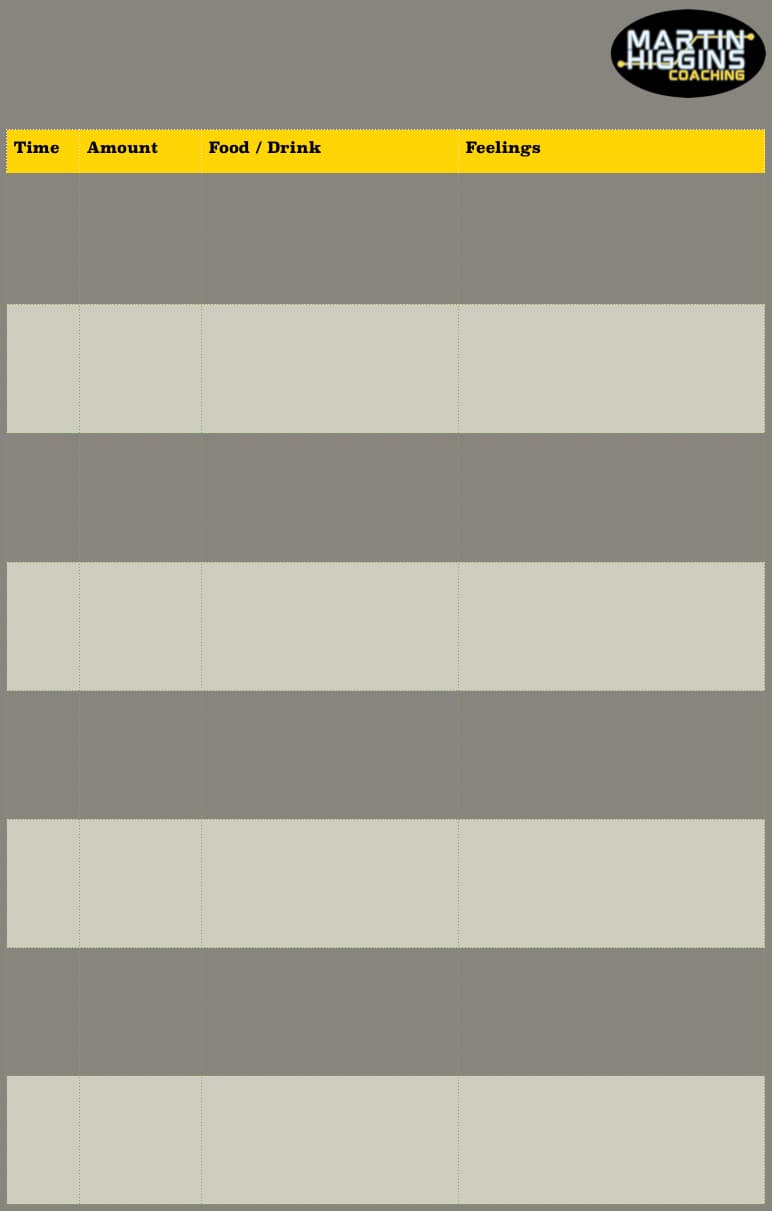Instructions
As with most food diaries there are columns for what you eat, drink and otherwise consume during your day. But unlike all the other diaries and apps I have seen mine has a column for how you feel about it.
The most important thing is that you can see things clearly when you look back over your records and that you have got the information you need.
Time
The time may be important, but then again it may not be. There are lots of ideas out there that suggest the time you eat things is vital. Concepts such as not eating after 7pm or having something to eat in the ‘window’ after exercise. There is valid research to support some of these time related things but it really isn’t as important for the majority of people as it’s made out to be.
Jot it down anyway in case it proves useful later but don’t get hung up about it. If you’re trying to remember exactly when in your morning you had biscuits with your coffee just don’t stress about it - pick a time that might be somewhere near right and that’ll do.
Amount
The quantity has a space but it isn’t as important as many coaches suggest. Your body is likely to process foods a bit different to the next person so the calories you get from the main food groups may well vary a lot.
Food packaging can also be a lot less accurate than you’d think. So pop in an amount but it can be a rough amount.
Be truthful (if you’ve had 10 squares of chocolate don’t list it as 2) but don’t be too stuck on measurements. A quantity of nuts equivalent to the size of your thumb or a piece of steak the size of your palm is as good a way to record it as the exact gram amount. Whatever is easy for you just go with that and aim for consistency of how you record things.
Food / Drink
This one is simply to state what the food or drink is. Don’t miss anything out here. If someone gave you a boiled sweet then jot it down.
Feelings
This one is the biggie. The most important information on your food diary is the feelings column. This is the one that’ll tell you what works and what doesn’t work for you.
The Diary

